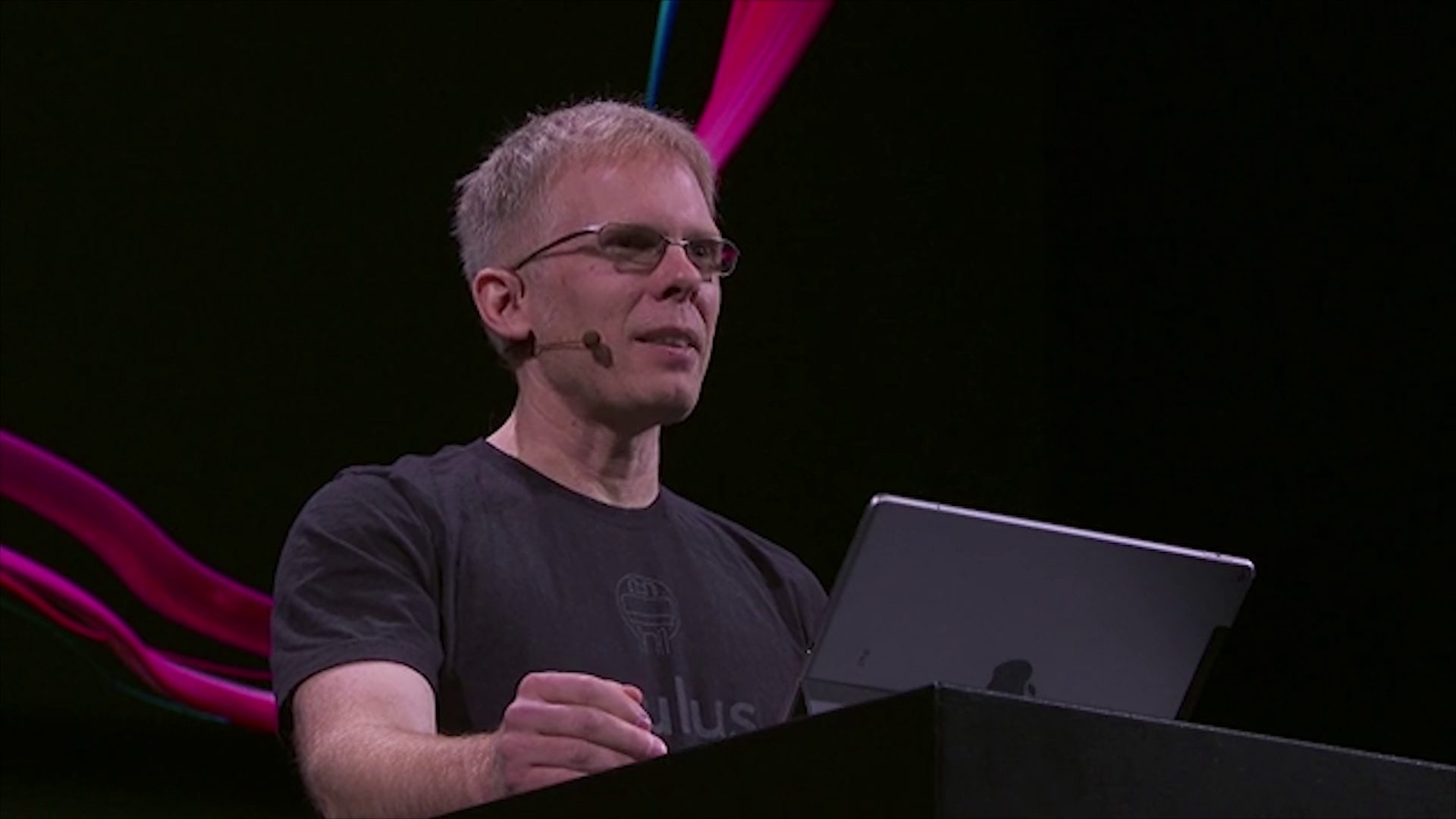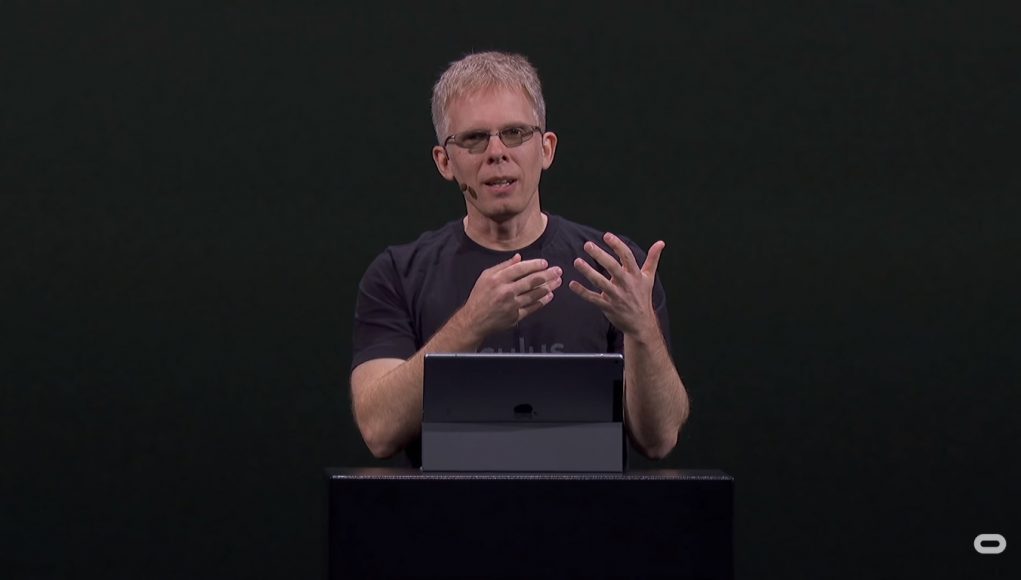Speaking on stage at Oculus Connect this morning, Oculus CTO John Carmack gave his signature unscripted talk, somehow going into depth despite covering a wide range of topics from Go to Quest to Rift, and plenty more. Part of his talk offered some insights into the relative power in the Quest headset and the expectations that developers and users should consider.
Oculus Quest is powered by Qualcomm’s Snapdragon 835 chip which isn’t uncommon to find in modern smartphones. Because it doesn’t have to be crammed into the tight confines of a phone, however, the processor can be run more aggressively without overheating. In fact, Quest has a fan inside to further dissipate heat and keep the headset at peak performance.

But how does a Snapdragon chip with active cooling translate to actual processing power and what kinds of games and graphics can developers expect to achieve? Oculus CTO John Carmack offers some insights..
“In terms of raw processing power […] Quest is in the neighborhood of the power of a previous gen Xbox 360 or PS3 […],” Carmack said at Oculus Connect. “But the important thing to keep in mind is that most games in that generation rendered a 1,280 × 720 view at 30 FPS and most of them didn’t have very good anti-aliasing. While in VR, we’re hoping you can render at 1,280 × 1,280—twice for stereo—at 72 FPS, which is eight and a half times more pixels than you would have on an old [Xbox] 360 game. Plus you want to be at 4x MSAA and Trilinear Filtering which are some percentages additional on top of that.”
So even though Quest has roughly the processing power of an Xbox 360, the greater demands for rendering VR content at higher resolution and framerate mean we shouldn’t expect to see ‘Xbox 360’ graphics from Quest any time soon, says Carmack.
“So it is not possible to take a game that was done at a high quality level, like a AAA title for [the Xbox 360] generation, and expect it to look like that in VR—it’s so many more pixels to wind up rendering.”
But, Quest isn’t without at least some advantages, which developers should hope to exploit to optimize their titles.
“On the upside [Quest has] far more texture memory and far more main memory in general than [anyone] had on those platforms, so some of the development can be easier, and in many cases you can trade really rich textures for complex shaders and multi-pass rendering in different ways,” Carmack said.
But whether or not Quest can deliver graphics which come close to what’s seen on PC today doesn’t impact the “core magic”, as he puts it, that Quest can deliver.
“I do stand by the statement that I made that the core magic of any Rift experience can be brought to [Quest],” he said. “But you can’t ignore the level of processing power differences. A big high-end PC can use up to 500 watts of power, and something like [Quest] is burning 5-something—there’s almost a factor of 100 difference in the total power.”

Given Quest’s positioning between the low-end Go and the high-end tethered Rift, Carmack believes that Quest will be look at by customers as a portable gaming device, and that means direct competition with Nintendo’s popular Switch console.
“Essentially, realistically we are going to wind up competing with the Nintendo Switch as a device where I don’t think there’s gonna be that many people who say ‘I’m not gonna buy a PS4, I’m gonna buy a Quest instead,’ I think we’re gonna have people that—like I’m a gamer, I’ve got my brand of choice for the main console, maybe I’ve got a PC to play games on—I’m gonna pick up a Quest as a mobile device, very much like the Switch is [perceived by consumers] right now.”
If that’s true, it means Quest will need to deliver very compelling content and tremendous value to customers in order to be relevant to a large number of users, especially considering that Switch sells for $100 less than Quest, and could be even cheaper by the time Quest launches in Spring 2019.







